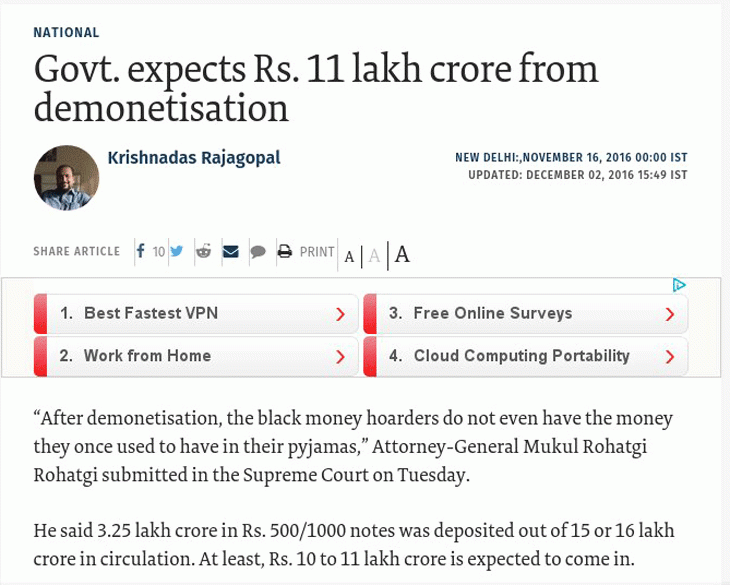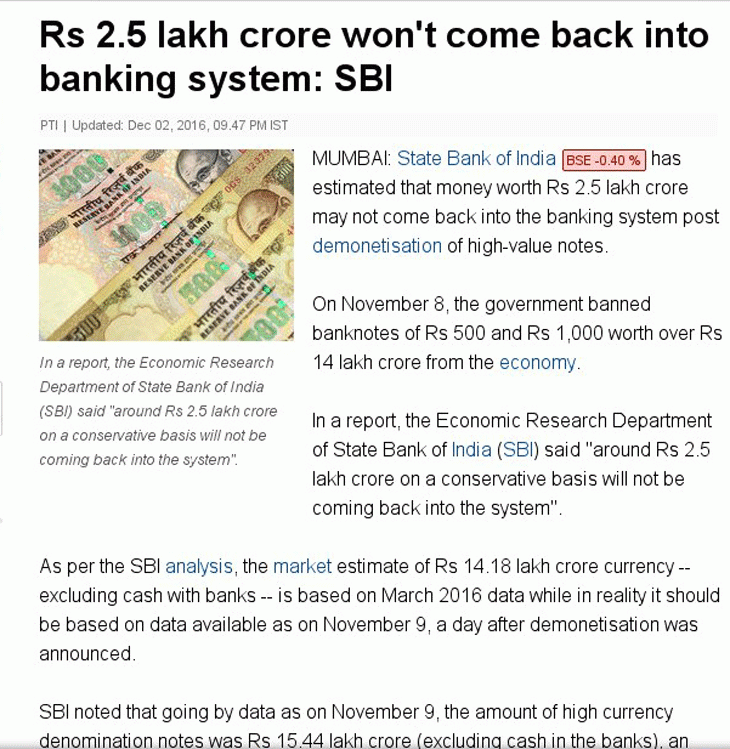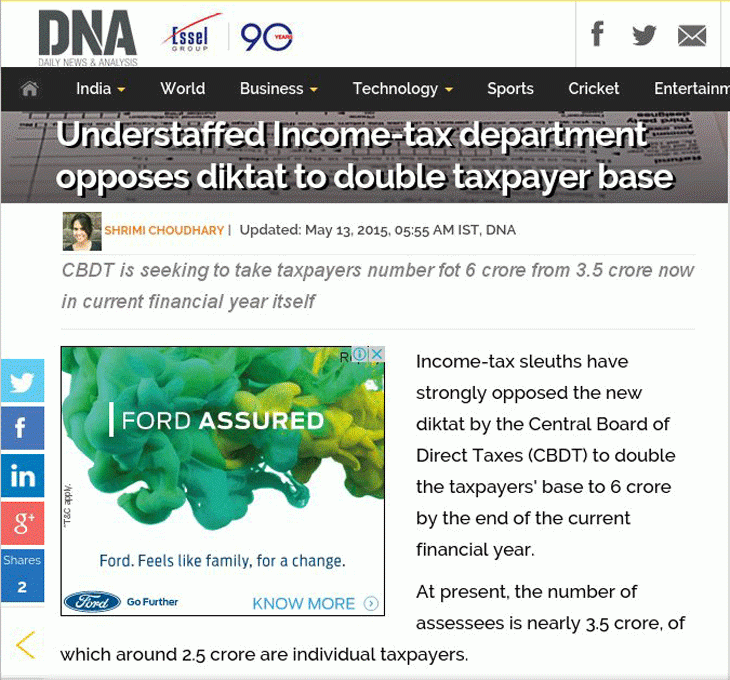Here's evidence that counters Amit Shah's latest bizarre spin on demonetisation

The BJP has invented a laughable spin to cover up for the embarrassment of the return of over 99% of demonetised currency. BJP chief Amit Shah told a gathering in Ahmedabad on 10 September that the return of nearly all of the defunct currency only means that “notes stocked in the houses of corrupt... have come back to the system for development”.
“You have noted that more than 99% notes are back into the banking system, but have you ever asked how many of these notes were (in the banking system) before demonetisation?" Shah asked at the Adikham Gujarat Yuva Townhall event in Ahmedabad.
“Never earlier, more than 80% of the (currency) notes was there in the system. I mean the currency which were not available for the country’s development… 20% notes was stocked in the houses of corrupt, their basements and other places… All those notes have come back to the system for development…,” he elaborated.
If this statement is an indication of Shah's understanding of economics, it is an indictment. In the government's original strategy, or a pretence of it, all of this money was NOT supposed to come back. The Attorney General of India (AG) had categorically told the Supreme Court on 15 November 2016 that of the Rs 15.44 lakh crore worth of demonetised currency, the government was expecting only Rs 10 to 11 lakh crore “to come in”.

Revenue Secretary Hasmukh Adhia had tweeted on 8 December that he had never predicted that government expected all demonetised money to come back to the system.
Did not make prediction that govt expects all demonetised money to come back to the system: Adhia https://t.co/8yTObfCU5A via @IndianExpress
— Dr Hasmukh Adhia (@adhia03) December 8, 2016
The tweet was in response to a media report that had earlier quoted Adhia saying that the government expected all demonetised money to come back to the system.
Adhia, later, denied making that exception.
In December 2016, the State Bank of India, the bank that stood shoulder to shoulder with the government in defending demonetisation, had said that as much as Rs 2.5 lakh crore won't come back into the banking system.

The entire attempt was to paint a picture of demonetisation having forced black money hoarders to simply destroy their cash because it was illegal now. That campaign stands totally discredited.
However, many ordinary people failed to deposit their genuine savings during the demonetisation period. At the same time, there were indeed reports of stacks of demonetised notes seen burning at some places and found in drains at some others.
Black and white
Clearly, some of the money was indeed lost. How is it then that all of it has come back? That only means that many got the opportunity to simply turn their black money into white – an euphemism for making illegally acquired income legal by sending it into the banking system without getting caught. This was totally possible during the demonetisation period, given the reports of multiple incidents of bank officials having colluded with the corrupt in converting demonetised money.
So effectively, black marketeers appear to have succeeded in depositing their illegally acquired money in bank accounts without getting caught for tax evasion and related crimes. In an alternate scenario, if the same people would have been caught by the Income Tax department, all this money would have been collected along with the valid tax on it, plus the heavy penalty for tax evasion.
Additionally, these people would have been charged of financial crime under the various provisions of law, making the process of cracking down on the black economy formal and effective. All of those benefits have now nearly been lost.
A Herculean task
The government says that the IT department has served 18 lakh notices to those who were found to have deposited large sums of money in their bank accounts during the demonetisation period.
How soon does the department intend to scrutinise these 18 lakh accounts and find out black money launderers?
Prof Arun Kumar, among the country's finest experts on black money, says that the IT department “does not have the capacity to audit more than a few lakh entities a year”.
This means that it will take “years” to audit these many accounts, detect black money and recover additional taxes. Besides, that there would be litigation and this department wins only “a tiny fraction of the cases”, Kumar adds.
How insurmountable is this task of detecting these fraudulent transactions can be gauged from what a senior Central Board of Direct Taxes (CBDT) official told Catch. The taxman informed, on the condition of anonymity, that most of the suspicious transactions that the department is tracking involves a complex layer of multiple level of Real Time Gross Settlement (RTGS) transactions.
For instance, imagine if “A” wanted to quietly deposit Rs 10 crore worth demonetised currency, what “A” simply did was to deposit it into a Jan Dhan account and transfer it from there to say 50 different accounts in sums of Rs 20 lakh each via a banking facility called RTGS. Under RTGS, the transfer of funds takes place in real time and the minimum amount remitted through it, for retail customers, is Rs 2 lakh.
Now those 50 accounts, in turn, further transfer that amount to other accounts, further breaking down the amount, again through RTGS.
For the perennially understaffed CBDT, the task of unraveling this complex web of lakhs of transactions is Herculean, if not impossible.


Kumar doesn't appear to be off the mark in his assessment that the department will take years to find its way through this maze.
This has put BJP in a situation that is deeply problematic, at worst, and embarrassing, at best.
It is only a matter of time before nearly everybody in the country will realise that the all objectives of demonetisation furnished by the government were fake and the exercise was a only a gimmick, but with massive repercussions. It is to delay this realisation that the government's spin-doctors are inventing newer benefits of the note ban in a bid to dupe whosoever is yet to understand the reality.
Edited by Aleesha Matharu
First published: 12 September 2017, 1:52 IST






![BJP's Kapil Mishra recreates Shankar Mahadevan’s ‘Breathless’ song to highlight Delhi pollution [WATCH] BJP's Kapil Mishra recreates Shankar Mahadevan’s ‘Breathless’ song to highlight Delhi pollution [WATCH]](https://images.catchnews.com/upload/2022/11/03/kapil-mishra_240884_300x172.png)

![Anupam Kher shares pictures of his toned body on 67th birthday [MUST SEE] Anupam Kher shares pictures of his toned body on 67th birthday [MUST SEE]](https://images.catchnews.com/upload/2022/03/07/Anupam_kher_231145_300x172.jpg)






